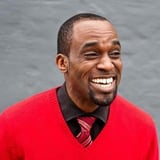Summary
A design process is only as good as the people who run it, no matter how "efficient" the process claims to be. This talk will cover the circumstances of a case study and the strategies that took place to establish and maintain momentum on a product that didn't have a direction. With the collaboration of a team in "flow," the work seemed (sometimes unbelievably) natural, enabling and empowering everybody not only to trust each other, but also to trust themselves in their own decision making and their own exploration of their craft and strengths with mutual trust and respect.
Key Insights
-
•
Frameworks help non-designers understand design decisions and foster team inclusivity.
-
•
Team flow differs from individual flow by emphasizing interdependence, not independence.
-
•
Achieving flow requires balancing challenge and skills along with clear goals and feedback.
-
•
Open communication and early involvement of all team members strengthen alignment and trust.
-
•
Strong team relationships allow teams to pivot quickly without losing momentum or morale.
-
•
Individual states of flow vary based on personal belief in purpose, scope clarity, and feedback.
-
•
Team flow benefits when members can feed off each other's energy and adapt communication styles.
-
•
Replicating team flow can be challenging with frequently changing teams due to lack of familiarity.
-
•
Respect, trust, and alignment empower teams to balance seriousness and casual connection.
-
•
Developing team flow shares similarities with dating or athletic instincts, requiring intuition and practice.
Notable Quotes
"I am usually the only designer on the team, and it gets difficult to get the information needed for design decisions."
"Frameworks are a team sport; each player brings unique strengths that help create innovative solutions."
"Surgeons say during difficult operations the whole team feels like a single organism moved by the same purpose."
"To get into flow, I need a strong belief in the purpose and the work we’re doing."
"We started with almost nothing and didn’t really know what goal we were trying to achieve."
"Getting everyone involved early helped reduce the need for me to explain why we do things."
"When we pivoted because of business decisions, we felt anxious but kept adapting together."
"Respect, trust, and alignment helped us feel empowered and comfortable talking about anything."
"Flow is different for each person; you have to adjust your style based on who you work with."
"Developing team flow is a lot like dating—you have to nurture it, build instinct, and practice."
Or choose a question:
















More Videos

"We made this move in January 2020 — our research and insights team moved out of UX but stayed within product organizations."
Nalini KotamrajuResearch After UX
March 25, 2024

"Availability bias means hiring managers often pick fruit from a tree they haven't planted."
Dean BroadleyNot Black Enough to be White
January 8, 2024

"If you’re not doing the work of addressing your own pain, you won’t be effective in helping others."
Denise Jacobs Nancy Douyon Renee Reid Lisa WelchmanInteractive Keynote: Social Change by Design
January 8, 2024

"Design thinking helped us empathize, define problems, co-create ideas, and then test them like products."
Kim Fellman CohenMeasuring the Designer Experience
October 23, 2019

"Power is the ability to change another person’s reality."
George AyeThat Quiet Little Voice: When Design and Ethics Collide
November 16, 2022

"Short-term pairings with different design people help bring back contributions into the central system."
Nathan CurtisBeyond the Toolkit: Spreading a System Across People & Products
June 9, 2016

"We focus on delivering high quality but also moving fast—being comfortable negotiating that tension is important."
Greg PetroffThe Compass Mission
March 10, 2021

"We have this collective superpower navigating the breadth and depth of human experience across cultures."
Chloe Amos-EdkinsA Cultural Approach: Research in the Context of Glocalisation
March 27, 2023

"We are not collecting vanity analytics, the data is doing real work on informing design."
Mackenzie Cockram Sara Branco Cunha Ian FranklinIntegrating Qualitative and Quantitative Research from Discovery to Live
December 16, 2022
















